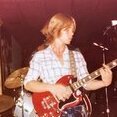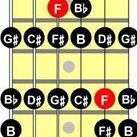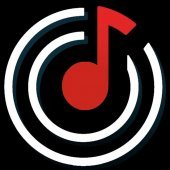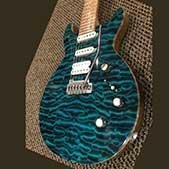Leaderboard
Popular Content
Showing content with the highest reputation on 02/18/2020 in all areas
-
4 points
-
Lol sorry i forgot myself , instant lost of control , my bad ....4 points
-
3 points
-
And some upgrades or packages are less expensive than WUPPING what you have, or at least it has been this way in the past. WUP is more reasonable around certain times of the year.3 points
-
I've never been impressed with any of the PA amp sims. There's a lot of hype in their marketing/advertising, but in reality they were just 'ok'. /fwiw/hth/ymmv3 points
-
I do like all of EZ Keys Midi packs. They are created to be very useful for almost anything.3 points
-
3 points
-
I've mastered hundreds of tracks. Just finished mastering (for vinyl!) a jazz album for Martha Davis (the Motels). I couldn't agree more with what you say. I've always said there are 20 valid ways to master a recording, but the only one that matters is the one the artist likes. I'm proud of the fact that I have no "sound." My goal is always to amplify the artist's intention, not turn it into something else. As to online mastering...I differentiate between different mastering goals. If you have a live recording you want to put on your web site for you fans, try the online mastering. If you like it, great - you just saved yourself a ton of money. If you have a mission-critical project, then use a good mastering engineer. I didn't say "professional" mastering engineer - I said a "good" one. It's not always the same thing. Finally, what makes a good mastering engineer is ears and experience, and good acoustics in the mastering suite. You don't need a lot of gear and plug-ins. I'd say EQ is 90% of my mastering approach, and everything else takes up the other 10%.3 points
-
My wife and I once toured a new housing development. Some of the homes were still under construction, which the salesman promoted as a plus, since we'd be able to customize the house. My wife asked if that included the color of the house. No, that was strictly forbidden, we were told. These colors - all a variations of gray - had been chosen by urban planning experts for maximum homogeneity and inoffensiveness. Likewise the limits on external decorations, including trees, shrubs and fences. You were not allowed to work on your car in your own driveway. Grass had to be trimmed weekly. Violating these rules would result in a fine. Looking around the development, we noticed that everybody living there also looked the same, as did their kids. Real Stepford Wives stuff. They all drove the same type of car. My guess is they all held the same social and political views, too. We couldn't get out of there fast enough. Driving home, we noticed that every new housing development was a clone of that one. We gained a new appreciation for our older neighborhood with no official color scheme, both messy and neatly manicured lawns, bicycles lying in the yard and cars on jack stands. And people who represented a cross section of humanity, not cookie-cutter clones of one another. If you think that kind of rigorously-enforced blandness couldn't possible apply to creative endeavors such as music and art, look around. Ever fall asleep in a movie because you knew exactly what was going to happen next? We're being guided into a world of eggshell-colored sameness. I don't want that, even if I could personally determine what the universal mastering standards would be. Call it AI if it makes you feel more progressive, but this is really just art by committee. And don't say there's no difference between AI and a human export who similarly follows rules and norms. An ME will always come back to the client and ask "what do ya think?", or even tell the mix engineer to give it another try because it's not ready for mastering yet. An ME evaluates whether the song lyrics are intelligible, something AI will never be able to do (what would it think of "goo goo goo joob?"). Brian, you are correct that software assistants will get better. Heck, I use them myself every day in the form of spectrum analyzers, correlation meters, goniometers and such. I argue against the absurdity of the "only use your ears" manifesto, which conveniently ignores the limitations of human ears, psychoacoustic perception, speakers and room acoustics. Software aids are good. But automated mastering attempts to completely remove the human brain from the process, and no matter how good the AI gets it will never yield anything other than average results. That's just how it works.3 points
-
If I had to give up EVERY Plugin I own, and could only keep ONE, it would be Ozone Advanced....it can do ANYTHING that you could possibly need done...it's my "Desert Island" plugin!3 points
-
Everybody's dancing around it, but I'll just say it out loud: automated mastering is snake oil. Many accomplished mix engineers also happen to also be accomplished mastering engineers (e.g. Phil Ramone). But they don't master their own records. The value of an ME isn't in his expensive gear, granite speakers or perfectly-tuned rooms. The true value is having a separate set of ears that can critically and objectively evaluate your mix, in an environment other than your own studio. To that end, you'd do just as well by offering to swap mastering duties with somebody from the Songs forum.3 points
-
Weaning off CAL may be a good idea. CAL was deprecated almost 20 years ago. In addition to the new MFX linked above, CbB includes a Velocity MFX with an randomizing feature.3 points
-
WUP if you're re-selling. WUP if they add new things to a bundle (and it's cheaper than buying them). WUP if your OS changes require it (Mac users get this more than PC) WUP if you want/like to have all your plugins running the same version number. WUP if you need direct support. None of those reasons are the same as a subscription though. Now that the sudden V11 release is out of the way (due to the Mac OS upgrade) I am hoping there will be many years before V12 ships. You can still update plugins with the same major version number even without WUP (which I think a lot of people don't understand). Which means it's not a subscription.2 points
-
The keys of my piano-based compositions tend to be dictated by the fingering of some chords or just where I happened to 'find' the piece while improvising. I've occasionally transposed recorded MIDI to another key to get the right timbre. If the piece is easily played in the new key, I might re-record it, but sometimes it's really not playable in the ideal key. I'm having to think about this more frequently lately as I'm now going back and forth between synth pianos and a real grand piano which gets 'muddy' much faster at the low end than any synth. Nothing resonates like a real piano.2 points
-
Yes, the key is key! On guitar it makes a massive difference too, as when people use traditional open chords, the actual chord voiceings change. Its a hard decision though, as sometimes a great key on an instrument, may be bad for a vocalist. Usually I prioritise vocals.2 points
-
Wow!! This would be one to grab. In fact, all Melda's free plugins are worth getting and learning. Not a dud in the bunch. And there are 37 free plugins in that bundle!! 37!!2 points
-
Now I have to check if I still got a key left. Otherwise it's to Best Service for another sixpack2 points
-
2 points
-
I have Horizon and a bunch of the other decent plugins that weren't part of Horizon. I can live with a WUP every few years to keep them current. I will probably never be a fan of subscriptions. I notice several other companies are offering buy or rent. If rent ever becomes mandatory, that's probably the day I start shopping for something else. Not sure if you can see the info for plugin updates. I would like to know what I'm getting in my "update". Did they add features I don't know about. Was it simply an under the hood improvement? If so, did I really need it? I still haven't updated my Windows Portal. I want to fly under the radar as long as I can. Everything is working.2 points
-
This is potentially confusing for someone new to this. You have received some great answers here. In an attempt to explain a few things from a different vantage point I'll throw in my .00002 worth. All DAWS are just a little bit different. Even older versions of Cakewalk aren't the same as the latest release, so don't feel as though this should be easy when it really isn't easy if you've never done it. All DAWS have to take recorded midi and send it to something that can play it. If you import the midi from something else obviously recording isn't needed. It seems that you have gotten this far since you have midi on a midi track. All Cakewalk tracks both audio and midi have two little boxes at the bottom of the track in console view. The top is the input. Bottom is where the signal is going. Clicking on the boxes lets you select. Probably easier initially is to load a soft synth first. Now drag the midi right into it. No need to be concerned about input since the midi is in there already. Provided your audio interface or sound card is correctly hooked up you should be able to hear audio. It's that easy. Plugins are drag and drop. Bit the "B" key and you should see an explorer with the available synths/media and plugins available. Just drag one onto the fx area of the track. You may also right click on a midi file and you will see FX in the list. Clicking on that will open a drop down of all midi effects.2 points
-
2 points
-
I'm currently paying $10.99 a month for the Slate All Access...and it is WELL worth the money... it's the ONLY subscription I have, or ever WILL have...as there is no way I could afford all those plugins... and the tutorials themselves are almost worth it...plus all the added stuff. The only thing that SHOULD be added is SSD....not that I would ever use it, but "all access" should mean ALL access!2 points
-
It's sad, but now every time I see a Musician's Friend deal, I wonder which "deal" they want to screw me on next... Makes me sad, because I used to order from their mail order catalogue back in the 80's.2 points
-
Looking at the Wayback machine they seem to have evolved a few plans over the years. I see some rent-to-own plans ($149/month for 24 months for Mercury, $49/month for Platinum) last year. Before that they had some $9.99/month just rent Silver and $149 Mercury. This current Silver/Gold/Platinum at $6.99/$9.99/$19.99 is still a bit off I think (especially the yearly cost which is pretty close to what you can buy the packages outright for if you wait for a sale) I can't imagine any pro users seeing a Platinum subscription even with the additional 5 bonus plugins as being good enough for a one-off job. Maybe Horizon+5. The real problem of course is that unless you have the plugins day in and day out you'll never be good enough using them to warrant a spot subscription. I'm not sure I believe there is a market for plugins on demand. Certainly not among the non-pro users, but even professional users seem unlikely to swap in and out toolsets. Mostly they stick with the same handful of plugins, day in and day out. They may replace those pieces (for newer better plugins) but I'd bet they aren't often finding themselves needing some random Waves plugin out of the blue. And if that was to happen I doubt it's in Silver/Gold/Platinum. If Wave's wants to get into the subscription game they need to make a Mercury+Studio Classics+Inspire for $50/month. And that'll never happen since they want to claim Mercury is $7500 full retail.2 points
-
They have had a subscription option for a while now, not sure these new terms are much better. I'd label this as "not a deal".2 points
-
Cool, I also try to talk up Cakewalk over there, especially now that it's free. Although most folks there seem to use notation software. some write their stuff in notation, then do a sound version in a DAW. Of course, being left-handed I do the exact opposite, I write it in Cakewalk and then do the score in notation software. Which apparently nobody else on the planet does....2 points
-
2 points
-
I'd be inclined (as I have) to put the x86 VST folder in the root of the C drive to avoid badly behaved/written VSTs falling foul of UAT and refusing to work. EDIT: UAC not UAT.2 points
-
KeyPleezer has released LivingRoom Upright Piano Free Edition, a multi-format lite version of the complete edition of the instrument, currently in production for Native Instruments Kontakt sampler. The instrument is a virtual character upright piano that has been sampled from a Swedish large-size upright piano. The free edition consists of 1.5GB of full length 24-bit / 44.1kHz .wav samples. KeyPleezer says: A very intimate uptake of the large-body piano sound with lots of detail and clarity make up this character upright piano instrument. Our complete edition was recorded in 3 close microphone positions. The sounds for this free edition were selected from the first microphone position - above keys close to hammers. All white keys were included in 6 layers, 3 for Pedal Up, 3 for Pedal down (sustain pedal pressed), so separate sound layers triggered based on sustain pedal action. Features include: Intimate & detailed sound rich in piano body. Slightly out of tune here and there, for more realism (not broken or honky-tonk). Close mic player position with lots of stereo space. 6 Velocity layer recordings, piano, mezzo & forte dual recordings (3 layers for Pedal OFF, 3 Layers for Pedal ON). Dynamic Range knob for velocity triggered volume range. Pre-track volume output. 2 Separate "Raw Authentic" and "Muted / Dampened" upper key range presets "Raw Authentic" preset has a upper key range that behaves like the original piano, playing the entire sound always. "Muted / Dampened" preset plays upper ranges like any other key, dampened upon release. Logic Pro X & GarageBand specific Smart Controls: Dynamic Range (EXS instrument volume range). Bass & Treble tone controls. Compression control. Transient control. Volume output knob pre-track. Works for both Windows & macOS, depending on your sampler software. Currently supported samplers are Native Instruments Kontakt sampler (5.0.1+, full version required) and the EXS24 sampler. A separate macOS installer is available for using Logic Pro X, MainStage and GarageBand patches, with built-in Smart Controls that load directly in these 3 apps. Smart controls include dynamic range control, compression, transient control and eq. According to KeyPleezer, more sampler formats are in production. View of Smart Controls user interface in GarageBand v10.3.4 running under macOS Catalina. For Kontakt a separate NCW version is also available, including only .ncw (lossless compressed audio) sound files which is lighter in size at around 700MB. LivingRoom Upright Piano Free Edition can be downloaded for free via KeyPleezer's website at keypleezer.com/livingroom-upright-piano/free-edition https://keypleezer.com/livingroom-upright-piano/free-edition/2 points
-
Very nice video as far as playing and having nice tools to get better on your Axe ... ...as far as the first part of the video and his political views ....sorry nothing I can do about that . Those are his feelings so I'm not gonna go there ...Honestly , I'm all about the Music ... Kenny1 point
-
Indeed it does does doesoesessssss ... .. see what I did there?1 point
-
A few months ago I discovered the SansAmp PSA-1 in my collection of plugins while looking for something to fix a poorly recorded guitar track and this was the only one that worked. It produces some really unusual sounds. I had forgotton I installed it.1 point
-
There is also Flute, Handbells, and Soft Drums for free... Have to supply your email address to access1 point
-
1 point
-
Following on Starise' post, The fundamental thing to understand is that there are four types of tracks in Cakewalk, MIDI, Audio, Synth, and Instrument (also called a 'Simple Instrument'. - A MIDI track only records, echoes and plays back MIDI events. - An Audio track only records, echoes and plays back audio. - A Synth track is just an Audio track with a soft synth assigned as Input; it records , echoes and plays back audio from a synth. - An Instrument track combines MIDI and Synth track functions into a single track; the Input is MIDI, the Ouput is Audio, and connections to a synth in the rack are more or less hidden. It is possible to place a synth VSTi in the FX bin of an Audio track rather than using the Input assignment, but this is not the typical or ideal way to use soft synths. In Cakewalk, it's preferred to insert the synth in the virtual Synth Rack (Views > Synth Rack), and assign the Output of a MIDI track and the Input of an Audio track to it. You can do this all manually, but the Insert > Soft Synth dialog gives you options for having the necessary tracks created automatically along with inserting the synth in the rack. If the synth uses a single, stereo output, MIDI channel and patch/sound (i.e. 'monotimbral' as opposed to multitimbral), the easiest option is to choose to create a Simple Instrument track. Cakewalk calls this 'Simple' because it was the last type of track to be added to the program, and was considered 'simple' compared to managing separate MIDI and audio tracks. A lot of 'old-skoolers' don't like them because they obscure the signal routing somewhat, and make it slightly more awkward to use some features (e.g. MIDI Controller Envelopes), but they can be very handy, and this is probably what you're used to other DAWs. For a multitimbral or drum synth that uses multiple MIDI channels and/or audio outputs, you will usually want to insert it with a separate MIDI and Audio tracks. In your case, where you already have the MIDI tracks, you would typically choose to just create the audio ouput tracks, and then assign the outputs of your existing MIDI tracks to the synth. If TTS-1 isn't loaded automatically when you opened the MIDI file because your DAW has hardware MIDI Outs available or you brought the MIDI tracks in by File > Import, you can easily assign all the tracks to a multitimbral synth that you've inserted in the rack by selecting them all (Ctrl+A, or left-click and sweep through the track numbers), and then holding Ctrl while you change the Output assignment of one of them to the synth. In that case, you would also need to assign an output Channel to each MIDI track to ensure eac MIDI track drives a single channel of the multitimbral synth. Hope that helps clarify some things.1 point
-
If anyone is interested - This is from google translate so you know it might not be exactly correct. Greetings to the developers! I am aware that the main developer is SONOR Russian and I am very proud because I myself am a shcoder. I am writing for you guys - while there was a sonor - it was possible to route audio through the reac control panel and asio forcibly setting the inputs and outputs that you really need. The roland company sent me their m480 remote control and 2 multicores 6 years ago - the remote is a wonderful workhorse - simple and thought out to the smallest detail like your sonor program - a product of amazing quality. By installing drivers for it, I didn’t suffer - it immediately appeared in the sonor, I set the outputs and inputs that were necessary for me and directly controlled the remote control from the sonor, respectively, received 40 channels of sound from the remote control via reac and monitoring without bothering, outputting to the built-in sound and several others personal monitoring devices (usb-connected external sound cards and remote control). Since the update on cwbl, problems have begun. The first - not terrible cwbl flatly refused to somehow interact with the m480 - that is, I lost the ability to move the fader and all sorts of small things like the equalizer of the compressor and other things. The remote control is always at hand and all that is needed. I am doing it on it without duplicating the same thing in the program, although earlier this possibility was and it was implemented wonderfully. The second and main problem is that cwbl does not give me routing capabilities - and everything would be fine - (because the route settings for some unknown reason did not go wrong and lasted at least a couple of years before today's update) the audio engine fell off or crashed when recordings, or for some unknown reason, ate all the memory, the Russian language ceased to perceive, the plug-in settings got lost, the MIDI fell off, it was impossible to assign an exit to the master - but it was somehow bearable - they would blow a new one, add it, exclude it they still add, etc. - I was looking for excuses and tried to endure - because The sonor product was made by my compatriot and was extremely excellent - I believed in our developers. Now I understand clearly (maybe I'm wrong) the cwbl project is clearly far from the product under the name sonor and this project is not led by a Russian developer, because functions are limited, opportunities are limited, support is canceled, and the most unpleasant thing - the attitude towards the user - forces you to upgrade Windows to 8k or 10k - this is the strategy of planned obsolescence - pure water capitalism based on endless absorption and the need to absorb further in order to absorb and enrich. Today I’ve updated - I lost my route and cwbl refuses to assign different devices to the inputs and outputs. Moreover, after updating, he suggested updating again and said that for the next update you need to put 8 ku or 10tku windows. Yes, I had the opportunity to upgrade to another version of Windows for free earlier - but why do I need such problems - update the OS on a perfectly working solution in a recording studio? - I didn’t update - why do I need a raw unfinished sorry for floating in a faience friend, constantly asking for some updates - an absolutely uncontrolled inhibitory something as an operating system? - I, as an absolutely adequate rational person - still do not see the real need to update Windows - only forced. The reason why cwbl was updated today is simple - the master bus muted error got out again since he does not have an output device. I need to record and I have such a hat. the reac panel was also not called from the button inside the program settings. it was not possible to do anything. Needless to say that my experience: administering systems, databases, servers, platforms for up to 500 machines, writing all kinds of client-server applications, crutches for programs, modules, functions, and completely adapting 1ski to the specific needs of the company I worked for did not help me . Like today I just did not dance with a tambourine. What I just did not do on the unlocked Windows in the developer environment - cwbl did not see the devices. To be honest, I'm tired of all the problems that I have had since the update. I really want a stable system - just this one - it is thought out, an intuitive and convenient interface, adequacy and flexibility in management - and just a huge force of habit. Please allow further switching between different interfaces and input / output devices. Today I don’t need an external audio card - I have two 1608 digital multicores and a remote control - so even I can’t connect them as separate devices and patch the ports as I need. although earlier in sonar this possibility was also connected to 3 input devices (2 multicore and remote control by turn), 2 of them were also connected to the output (twisted through the switch) and in parallel the master went to the built-in and on-line USB6 card. I don’t ask much - after all, there was functionality.1 point
-
If you work with sampled instruments you can create your own original sounds by combining instrumental voices together, specifically for your lead (melody) instrument. Write the parts in unison with each other or write one or more in octaves. Some suggested combinations are flute and clarinet, guitar and tenor sax, trombone (upper range) and alto sax. oboe and clarinet. Harpsichord (yes, harpsichord) and almost any tuned percussion instrument. The possibilities of instrument combinations is endless. Make sure that none of the instruments in the group dominates the others in volume. It's best to limit the number of instrumental voices in the group to three or four for best quality. Play around with your own combinations. It's fun and it will certainly add listening interest to your music. By experimenting you can create some ear-catching, fresh, new, original instruments. I have used this technique since sampled instruments came upon the scene. Larry Graham Alexander1 point
-
Nope, you can´t. I disable Snap, select a small snippet of audio, press CTL+L and it selects an eighth note length for looping, ignoring my selection. If I enter the values manually in the Loop selection module, as soon as I set one, it changes the other to make the selection larger. From what I see here, Andy is right. I don´t really loop this short, so I had not noticed, but unless we are missing something very obvious, there is a limitation.1 point
-
1 point
-
1 point
-
Kontakt 6.2.2 - 2020-02-17 FIXED Using Super Audio Cart by Impact Soundworks would cause hangs and crashes in certain cases FIXED The effect of having "Unwind Automation" On was reverted after saving and recalling a multi or host project, when the assignments were made through KSP FIXED There were still hangs and crashes when batch re-saving certain instruments FIXED Kontakt would crash when trying to load NKM files directly from the operating system (Finder / Explorer) FIXED Kontakt would crash when trying to load certain NKI files directly from the operating system (Finder / Explorer); only reproducible with NKIs from Kontakt Player libraries that were not activated on the affected device FIXED Overwriting an NKI through the "Save as..." menu did not work correctly on macOS 10.15 Catalina FIXED Kontakt could crash when adjusting LFO Retrigger across multiple groups FIXED Button hover states would not appear as expected in v6.2.0 and 6.2.1 when controls where overlapping FIXED After using the Creator Tools Instrument Editor on Windows, file paths would sometimes be corrupt when saving and recalling an NKI using Kontakt FIXED KSP Arrays loaded from NKA files were erroneously populated from fallback data on snapshot recall1 point
-
"Paint It Black" - Eric Burdon & War (Side note: Back in the late 60s, we were playing in the Parkway Tropics lounge in Grand Rapids, Michigan and Eric Burdon and the drummer for the Animals show up and want to sit in. Of course we let them. After the Parkway closed we went to a black bar (yes it was segregated back then), sat in with the band and played until it closed. Eric could make up 12 bar blues songs on the spot. When that closed we asked what was open, it was a gay bar "bottle club" and we sat in with that band. I guess that gave them a tour of many sides of the USA).1 point
-
1 point
-
Yeah, you're not going be able to open the multidock within that floated Console view. But you can Ctrl+Tab from the Console to the Track view, and if the Multidock is open or maximized, you'll see it there.1 point
-
This is just a quick video illustrating how to insert and route a Multitimbral Virtual Instrument for use inside of Cakewalk by BandLab. I am using IK Multimedia's Miroslav Philharmonk 2 here but the basic principles will apply to other instruments like HALionSonic, SampleTank, etc.. I hope you find it helpful? I also noted in this video special circumstances when not all VSTs will follow the MIDI volume control on the track strip to the volume control of the virtual instrument; in that case you have to resort to using automation in order to control certain parameters over time.1 point
-
Been using that since it came out. I tried several things, then finally logged out and signed back in and I've got the share links back!1 point
-
1 point
-
I’m very happy to announce that I have now made available the multitracks for my series RECORD, MIX, RELEASE, so that you can practice your mixing skills with this song J. DOWNLOAD HERE: https://www.creativesauce.net/record-mix-release-multitracks/1 point
-
Apogee makes good stuff, no doubt. At least half the pro studios I've been in use Apogee. But their marketing department has long played fast and loose with facts. I don't trust them. Focusrite, OTOH, has always been helpful and quick with bug fixes and support answers. Their preamps are pretty good, albeit low-gain. The two manufacturers use different technologies for ADC/DAC, with Focusrite having greater internal latency but otherwise more or less comparable audio quality. I'd suggest choosing between the two interfaces based on features - whichever one suits your needs and is easier to use. I doubt you'd be able to differentiate between the A/D conversions of the two in a blind A/B test. Maybe if you're recording dolphins at 192 KHz, but not for rock 'n roll. If you're hearing an obvious difference, make sure it's actually the interface that's the deciding factor and not one of the dozens of other factors (e.g. input impedance). Also bear in mind that ADCs are optimized for a target sampling frequency because no converter can be equally precise across all sample rates. Pro units tend to be optimized for 96 KHz while prosumer products are likely to be optimized for 44100 Hz. For this reason, a less-expensive unit might actually perform better at 44,1 than a higher-end pro unit.1 point































